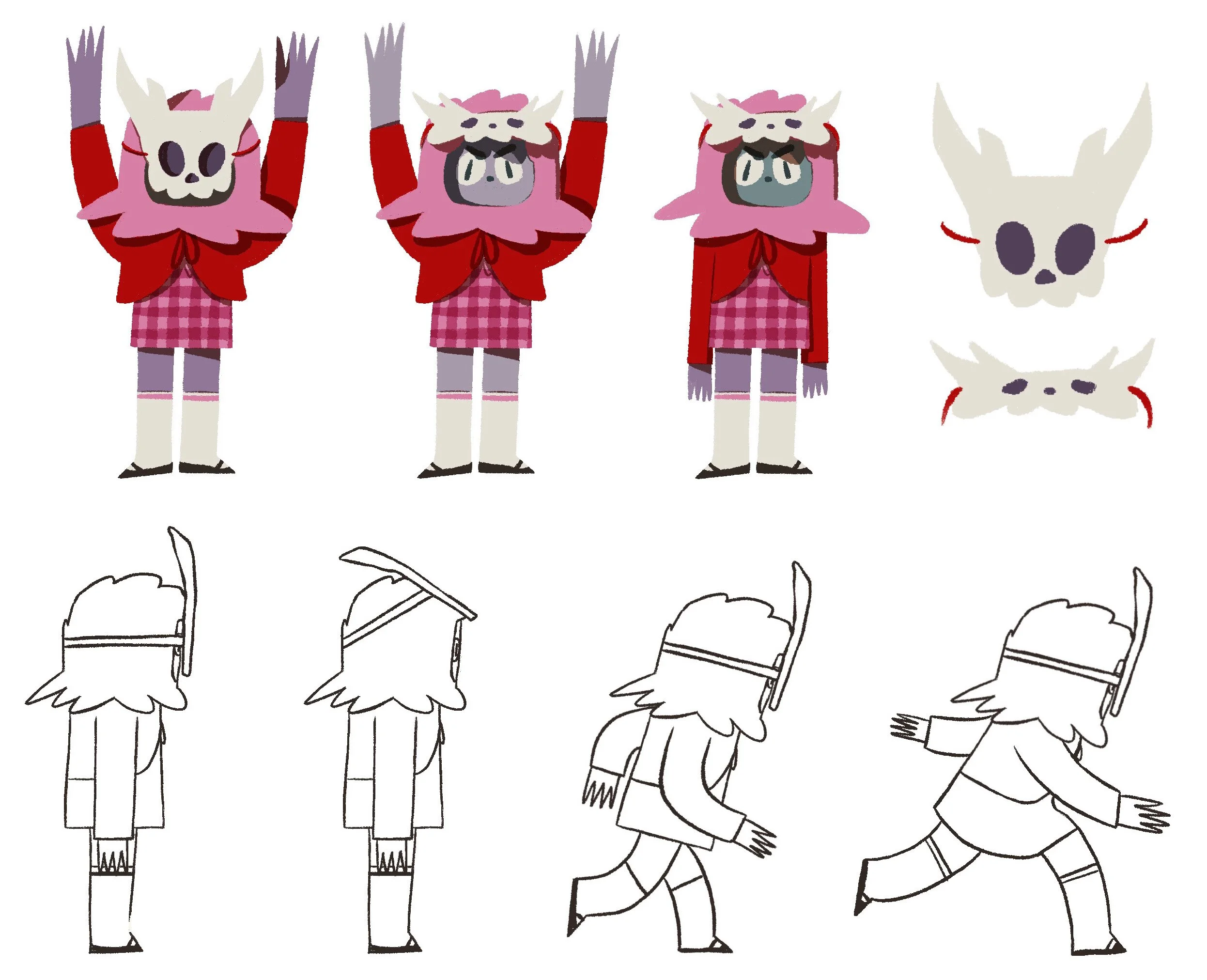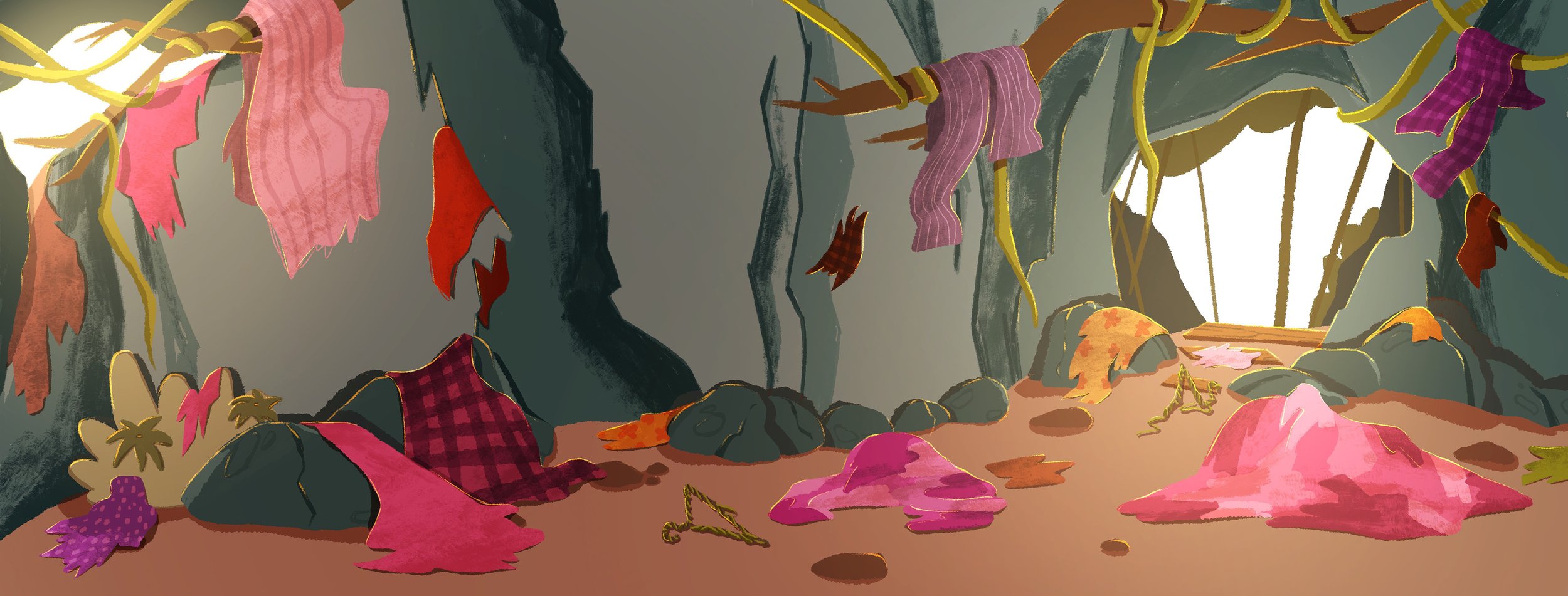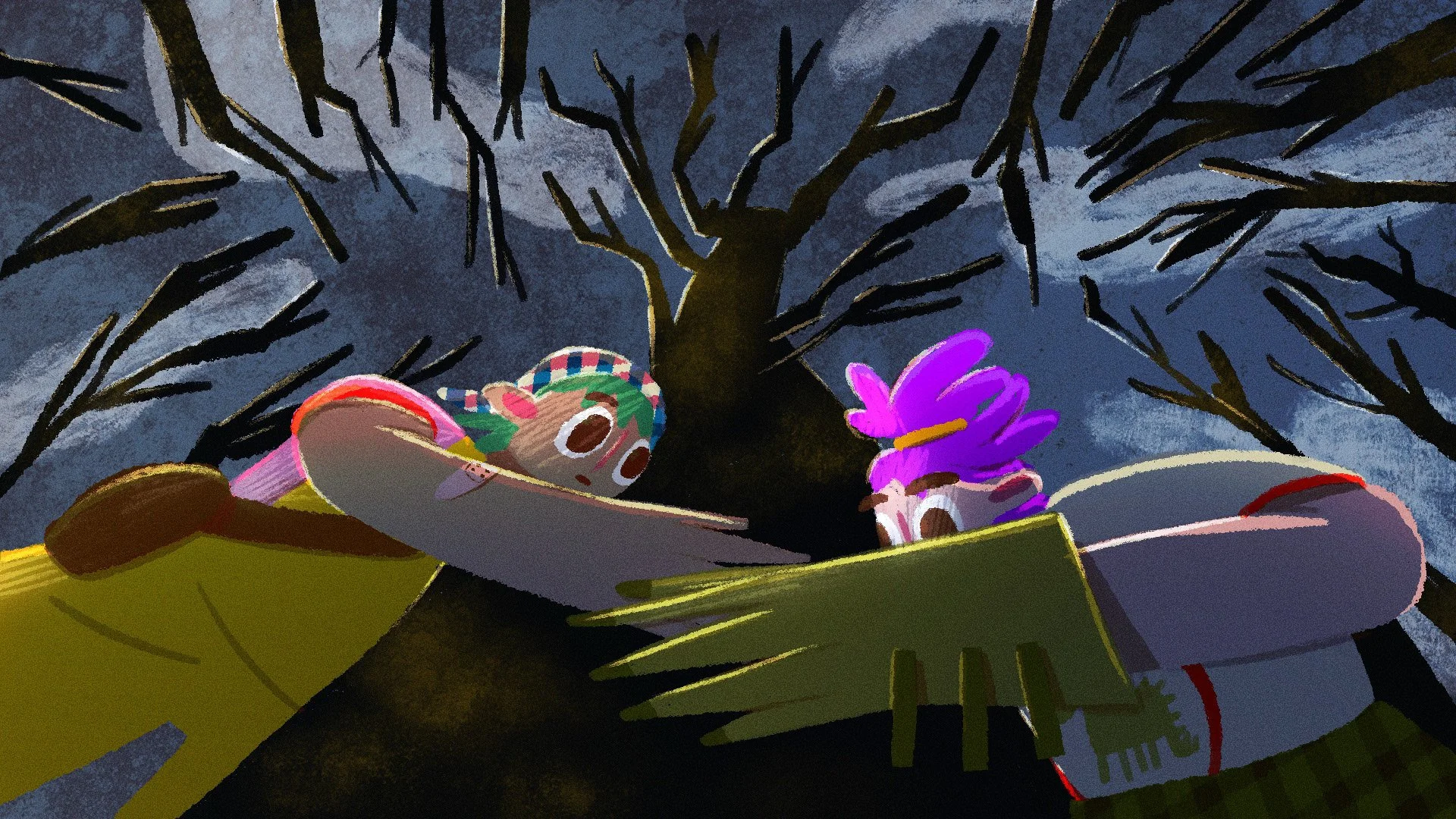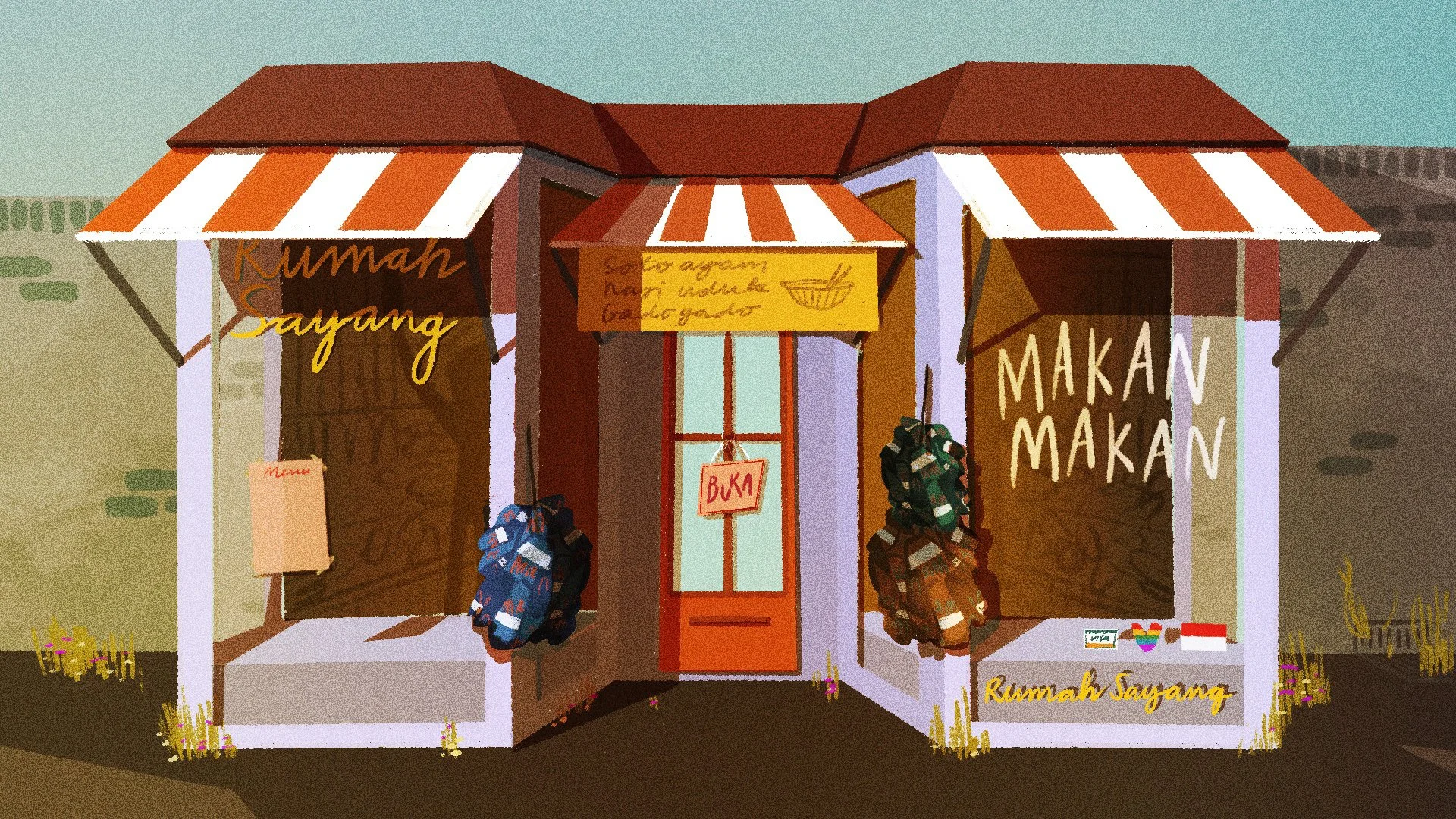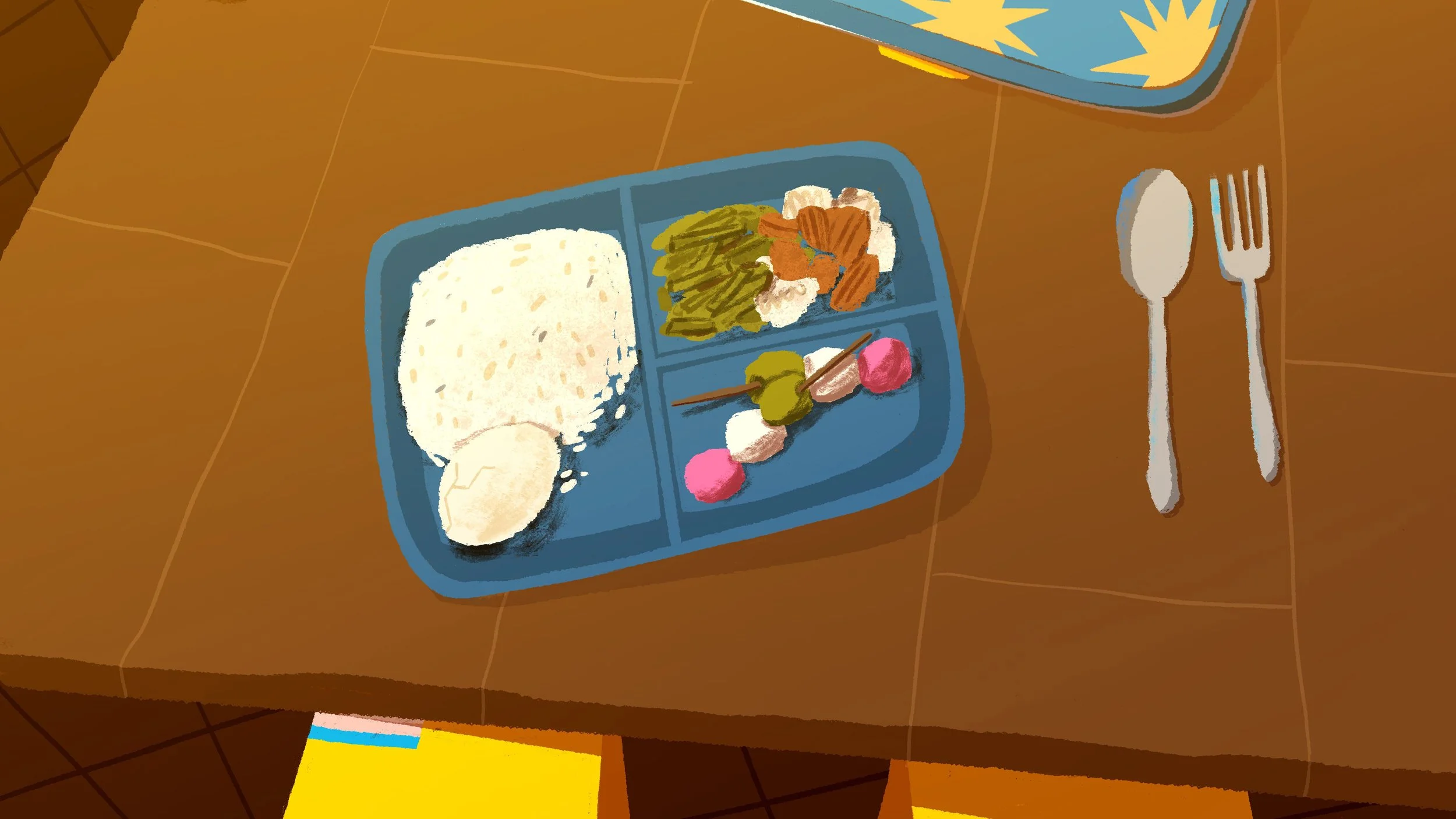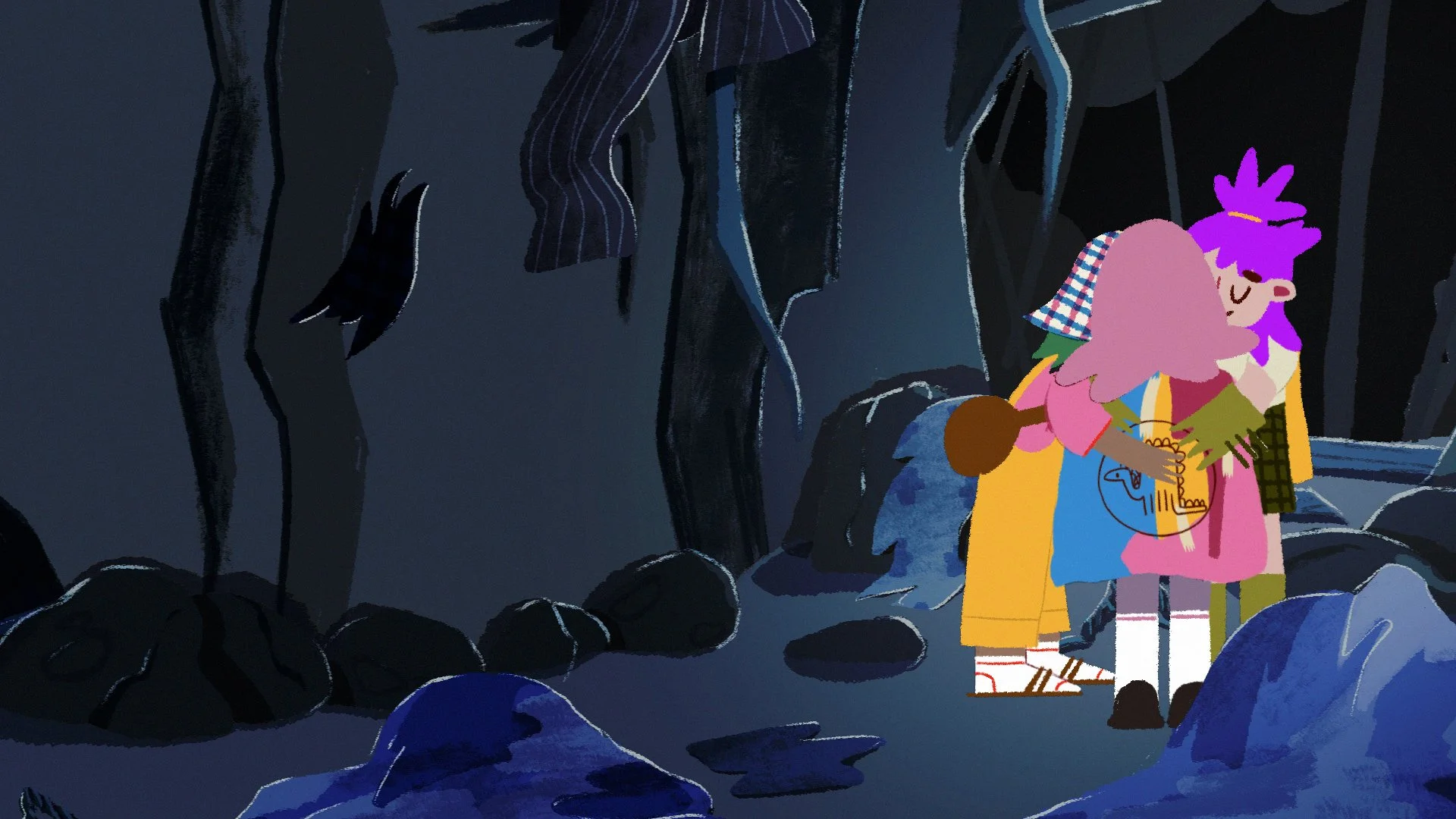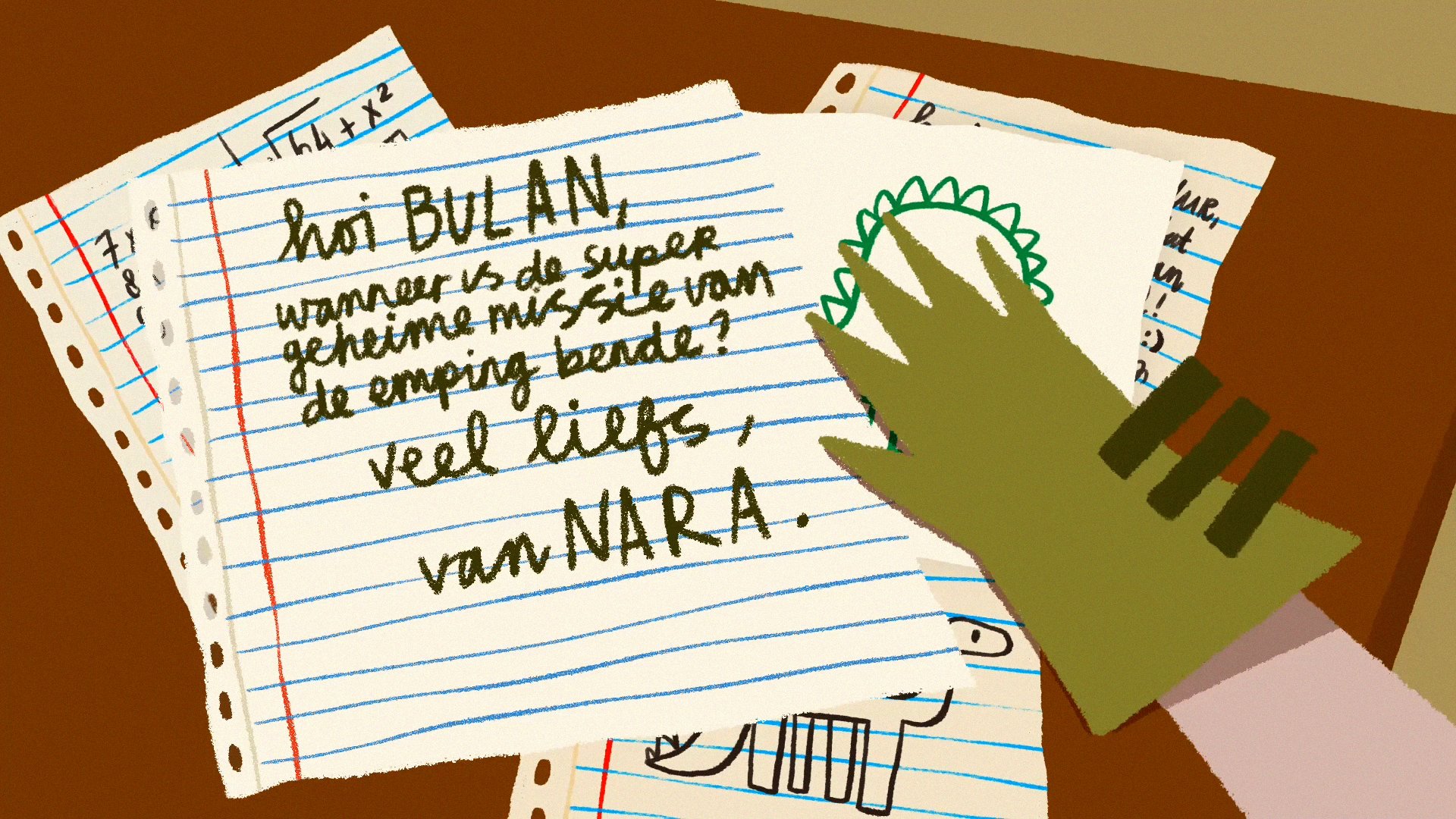De Emping Bende en het glimmende zwaard
visual development, character design, 2D animation
De Emping Bende is a story about uninhibited imagination, queer friendship and developing identity.
Duration ✶ 00:06:03 min
Duration trailer ✶ 00:01:00 min
Story & voice ✶ Indah Hijmans
Animation ✶ Indah Hijmans
Music & sound design ✶ Indah Hijmans
The film was created as a graduation film for the MA Animation at AKV St. Joost (2022).
De Emping Bende Universe
The story revolves around a gender-questioning Nara, whose preferred pronouns are she/her and they/them, and a Dutch-Indonesian transgender boy named Bulan, who uses he/him pronouns. Both their age is not disclosed in the story, but their environment puts them in the age group from 9 to 12. The difference in their personalities indicates that Bulan is a little older than Nara, with him being more timid and Nara more impulsive and naive.
The majority of media with queer representation dismisses those people as comedic relief or mainly focus on the struggles of being queer. De Emping Bende does not focus on the struggles of being queer, but on the journey of figuring out who they are. The struggles the characters endure are struggles that children that age can relate to, e.g. forgetting where they parked their bike or losing their favourite coloured pencils.
Themes
The overarching theme is about exploring identity, both cultural identity as gender identity, and each episode covers one dilemma or question in this journey as a theme. Themes that match the child’s development in creating a sense of identity are [a] developing a sense of individuality, [b] prioritising their own values and decisions, [c] purpose and [d] confidence. Each of these themes will be a central point in an episode, making the viewer grow closer to grasping the sense of identity of both Nara and Bulan.
The themes will become apparent at the start of each episode, through an adventure the two characters go on using their imagination. The foundation of these adventures is the place the two start off at the start of the episode, such as their school, building up the adventurous environments with their uninhibited imagination. An example could be that they are walking up the stairs in the school and the stairs morphing into a steep mountain surrounded by dark woods and wizards, or them finding a large stick and then them imagining the stick as a glow in the dark sword.
Storyline
De Emping Bende is a coming of age story about a queer friendship, identity and being uninhibited, and this pilot episode will be one of many, currently still fictional, episodes. This first episode revolves around building confidence in gender expression. We follow Nara and Bulan around during one of their adventurous adventures in the storage room of Rumah Sayang, the restaurant of Bulan's parents. Upon encountering a high fence and entering a seemingly dark forest, odd things start to happen.
Character design
The two main characters are best friends Nara and Bulan, both on their journey to respectively create a sense of their gender identity and cultural identity. Their personalities are very different from one another, with Nara being the more reckless and impulsive one and Bulan being more protective and timid. Having two opposing characters creates a natural dynamic and lets them spontaneously build on each other. I also want the characters to be well-rounded and open about their flaws and struggles. I incorporated this in the script of my characters, by showing their actions have consequences and with struggles every 10-year-old faces. The problems this age group endures might not seem like big struggles for adults, but seem astronomical in their reality.
The designs of both Nara and Bulan use human anatomy in a simplified form, focusing on shape language and silhouettes. By making the face of Bulan more rounded, contrasting with his spiky hair, and Nara’s more rectangular, contrasting with their round hair, the shapes of the characters are easily distinguishable.
Music
The soundtrack of De Emping Bende can be listened to with the music player below. I composed and produced the music myself, to make it fit the ambiance and storyline perfectly.
01. Title in major
02. Title in minor
03. Funky bass
04. Ethereal
05. Fairycore
06. Eerie bass
07. Alarmed
Animation tests
World building
Explicitly mentioning a character’s sexuality or gender identity isn’t necessary for a kid to understand the dynamic. However, their attraction or identity should be clear through their actions. Examples could be by naturally showing a same-sex couple or using someone’s preferred pronouns and not creating a whole scene about it. The queer environment doesn’t need as much explicitness in terms of needing a build-up of the story, explanation of terminology or unnaturalness about it. Children who struggle with identity or sexuality issues often only need to have role models and see others living their truths, without the shows making a big hassle about the issue as every sexuality or gender identity is a natural part of life.
The main takeaway from these insights is that De Emping Bende adds to the current landscape of animated shows for children with queer representation, while focusing on underrepresented gender identities rather than sexuality. The mix of preferred she/her and they/them pronouns of Nara are used interchangeably throughout the episodes, and examples of dealing with less common social cues, such as asking for someone’s pronouns or getting them wrong, are natural parts of the narrative.
Background elements, such as photographs of unconventional families on walls and a diverse range of, in the eyes of society, gendered toys in the kid’s rooms, are deliberatly chosen to be implicit and appear natural in the reality of the show. Similarly to the non-binary flag pin on Nara’s outfit and transgender flag patch on Bulan’s dungarees.
During a short questionnaire I spread on social media, I asked about particular traits and interests other queer and transgender people had when they were younger. My approach with these questions was to incorporate these insights in my film, so it represented the community as a whole. The insights I received led to a diverse set of character traits for both Bulan and Nara, making the characters more relatable and well-rounded. An example is the dinosaur interest of Nara, that shines through in their boots, gloves and t-shirt design. Since she loves dressing up, she wears the dinosaur costume everywhere she goes, spreading the message that it is okay to have specific interests that are different from what other people your age think are appropriate. Another example is the cautious personality of Bulan, where he loves being prepared for what ever might cross their path. He brings a leather satchel filled with necessities on every adventure, that is naturally filled with more things than a bag that size should allow, once again responding to the imagination of children.
Side character design
Moss, a monster who lives in the dark caves of the imagination of Bulan and Nara, pretends to be their friend by magically illuminating Nara’s stick sword. However, Moss does this with evil intentions: stealing Nara’s clothes. In the end of the episode, it is revealed that Moss is not an actual monster, but the stuffed animal of Bulan, now wearing the cape Nara made for them. The design of Moss and the dinosaur stuffed animal are very similar, and it is foreshadowed by this design choice that Moss is in fact Bulan’s toy.






